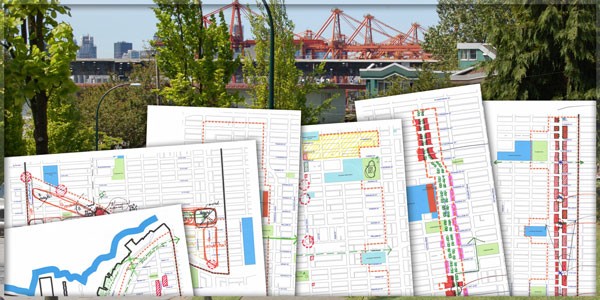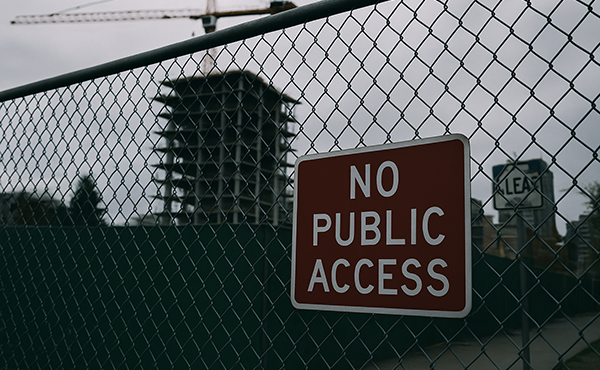
A city in change can be fascinating and inspiring, as much as it can be sad and depressing. This is true, I suspect, for its residents and its governors, its business owners and developers. The city is a tool, a mechanism, a product. It is just as well an environment, a living space, an organism.
The last session of three roundtables around the future of Grandview-Woodland nieghbourhood has been an interim conclusion to a promising process. Its promise, in light of the above, is plagued with question marks and challenges. Each of the seven sub-areas of the neighbourhood have a set of unique characteristics. Together they form a whole that has the quality and charm of a metropolitan village.
Is this charm reason enough to leave things as they are? How can we productively articulate a set of directions that facilitate a healthy change?
It is evident that members of the Citizens Assembly have invested a considerable effort in this engagement. They have generated a list of recommendations that will be presented to City Hall later this year. The last roundtable was dedicated to fine tuning the various points for each sub-area:
Cedar Cove – The Edgy Residential Land
Hastings – The Industrial High Street
Britannia Woodland – The Rental & Affordable Stock
Grandview – The Residential Heritage Enclave
Nanaimo – The Truck Route & Historic City Boundary
Commercial Dr. – The Heartbeat of The Neighborhood
Broadway & Commercial – The Regional Transit Hub
For each sub-area, a table or two were assigned for discussion. From the two tables I participated in, the buzz of emotions was tangible, yet somewhat subdued. There was urgency in the air mixed with despair; confusion alternating with decisiveness.
Around the first table, residents who wanted things to stay as they were sat beside a developer who was expecting zoning to allow development over four stories. More people than probably anticipated arrived at the Croatian Community Centre. As this was the last event where residents could participate in the consultation, some frustration trickled into the discussion.
At the second table, our facilitator was looking for specific feedback over points in the recommendations document. To me, they all seemed reasonably comprehensive, given the fact that recommendations will never be perfect.
What is needed now is looking into the next stage of engagement. To-date, the Assembly members have gone through an admirable process of learning and contribution.
One of the fascinating outcomes of the work of the Citizens’ Assembly, in my view, is the increase in connections. Neighbours got to know more about each other and their common interests, as much as their differences. Residents experienced, in a tangible way, the tools in use for urban planning. Connections are what makes a city work. We need to make sure connections remain a priority in the management and governance of Vancouver. Wherever they are weak, our job is to strengthen them.
It is worth paying attention to the layers of connection. The following points are quick notes I’ve taken as discussions around the table evolved:
- Within sub areas – enhance and improve the flow of pedestrians between streets and blocks.
- Between sub areas – minimize or eliminate the separation between sub areas.
- To adjacent areas/neighborhoods – Grandview Woodland is defined by thoughts and definitions. It also influences and is influenced by what people in and out of it are doing.
The wealth of ideas and insights from the work of the Assembly is dynamic. It can continue to nurture the productive connections created into the future, despite the fact that it is about to disassemble. Simply put, Established channels can facilitate the continued connections. New ones could surely emerge, however.
Possible channels could be the City of Vancouver website (Vancouver), the Commercial Drive Business Association (CDBS), Vancouver Public Library (VPL), Kettle Friendship Society (Kettle), The Aboriginal Friendship Centre Society (VAFCS) and other agencies. Each could have an interface established so that the engagement expands, instead of ending. We need to support the achievements of the Citizens’ Assembly in making sure the discussion continues: values & recommendation, zoning & policies are all open to interpretation. The documents we will see are generated in response to a commendable process. To fully benefit from the investment in this process, mechanisms of exchange need to be enhanced and maintained.
A city in change uses tools and mechanisms that become a product. That product is the environment we all live in and integrate into our lives. It’s not about whether any of us wants change or not. In reality, the city is an organism that constantly changes. Participation in the process is the life of a city. We need to make sure that the tools for participation evolve with the changing city, since this city is essentially who we are.
***
YarOn Stern is a designer dedicated to urban living. His training as Industrial (product) Designer in Israel, introduced him into the industry of Architecture and Construction in Vancouver. In 2011 YarOn completed the Urban Design certificate program at Simon Fraser University. You can see him in community events around the lower mainland and beyond, listening to insights and sharing his stories. His main blog focuses on urban issues at yaronstern.wordpress.com




